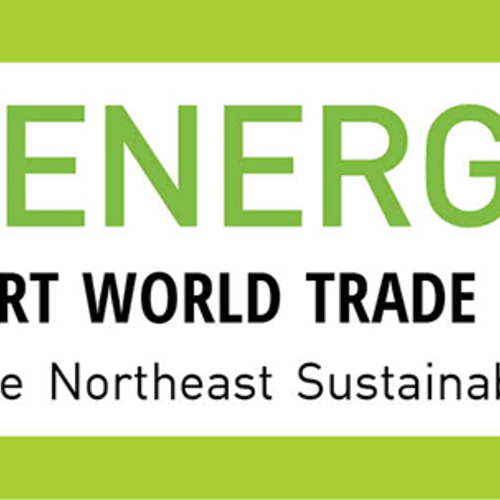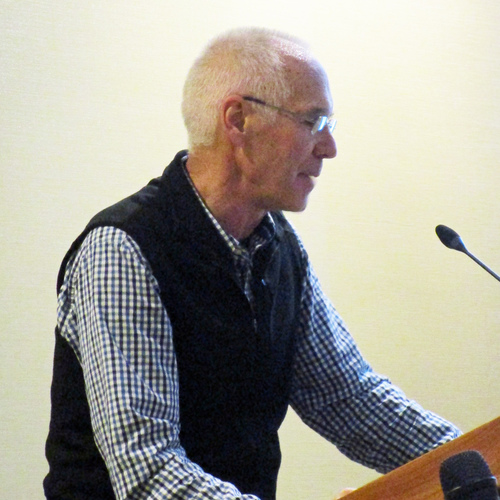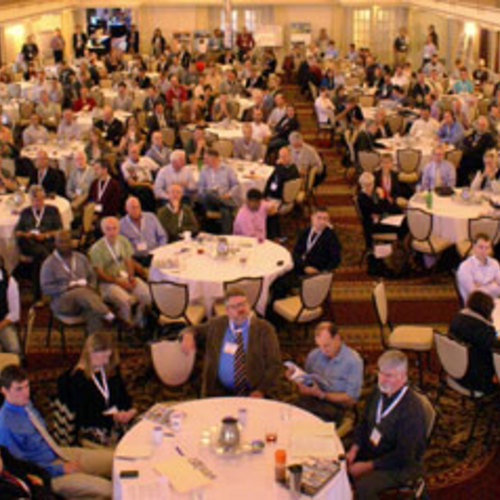
In December I attended the 2019 HIVE Conference in Austin, Texas. This was my second time to this conference and found it again to be an interesting experience, different from the typical building industry event. HIVE is an acronym for Housing, Innovation, Vision, and Economics, and the event strives to address each of those priorities over two days and through the Hive for Housing website, which features regular articles on the same topics throughout the year.
This is not your typical building industry conference. It is light on the nuts and bolts of construction, and instead it focuses on climate change and resilience, and how to move the industry towards bigger and faster changes. These topics address severe weather events that are affecting housing directly and recognize that the industry needs to come up with solutions sooner rather than later in order to succeed and thrive. Each day of the conference had several keynotes and interviews, interspersed with concurrent breakout sessions. These sessions worked well as open conversations rather than standard lectures.
A disruptive keynote and one scary interview
The opening keynote, “A Shift in Thinking,” by Jennifer Crews of SHIFT Thinking, offered general ideas on how to implement change in processes. My key takeaway was that traditional leadership leads to incremental results while disruptive leadership leads to exponential results. Jennifer encouraged us to empower people with decision principles instead of hard rules to get creative solutions to problems. There is a lot of discussion about radical transformation in housing, and while it does need some serious improvement, being a very conservative industry, I think broad based exponential changes is a very audacious goal. I expect that we will continue see continuous gradual improvement, as much as many would like faster changes.
Probably the most terrifying session was an interview with David Wallace Wells, author of “The Uninhabitable Earth.” Originally an article, that David expanded into a book, he is seen by some of the scientific community as a bit of an alarmist on climate change, and he certainly scared me with his predictions.
Insightful breakout sessions
The first breakout session I joined was called “Design: the Weight of Design,” described as “How can we redefine design to meet cost, policy, and consumer demands.” Chris Krager, an architect and developer, provided an overview of his practice which involves primarily modular housing developments. He discussed the challenges in developing a modular house system including factories going bankrupt and meeting customer demand while limiting options to manage costs.
Chris’ modular home system includes a set of twelve standard designs, with the options limited primarily to finishes. I appreciated his acknowledgement that often the only way to design and build what you want is to be the developer. Several audience members were concerned about too little difference between homes and apartments. In addition to the standard modular system, his firm is developing site specific modular multifamily projects, working with local agencies to increase density, reduce parking requirements, and include affordable and workforce components.
Another breakout sessions featured James Ramsey of Raad Studio, titled “Building Technology: Sheltered from the Storm.” While he only marginally touched on resilience, it was a very engaging session. Raad has proposed the LowLine in NYC, and underground park in abandoned trolley tunnels, turning them into light filled spaces using sun tracking collection dishes to concentrate sunlight that is sent below ground in narrow beams and redistributed through lenses to provide natural light. The concept is to create public green space in a neighborhood that has very little. Still a concept, but they created a temporary demonstration project in an old warehouse that was apparently very successful. He also shared a residential project on the coast that worked with existing dunes and water flows, using the landscape effectively and allowing construction to coexist with the landscape and ocean.
A Calmer Look at Climate Change
After the David Wallace Wells interview, Janice Barnes of Climate Adaptation Partners provided a calmer look at climate change called “How Much Time Do I Have? Real Estate Vulnerability Timeframes and Financing.” Barnes combined some clear projections of the risk of sea level rise with real-world resilience techniques employed in the Spaulding Rehabilitation Hospital in Boston including raising floors above flood levels,using reflective surfaces to reduce heat gain, landscaping to absorb stormwater, and using high-performance building envelope and operable windows for passive survivability. The $1.5 million invested in these improvements resulted in over $400,000 in reduced operating costs in the first year and avoided repair and replacement from future losses. This session provided a hopeful take on how to manage resilience and provided perspective on how we can deal with climate change without giving up hope. One comment regarding a “Managed Retreat” from places like the Florida Keys really stuck with me.
I have always viewed industry events as mixed bags. Lots of information and ideas are thrown out, and not everyone is interested in or needs everything that is provided, but everyone almost always walks away with at least one or two ideas that they can use. I picked up a few things at the HIVE conference that will stick with me going forward.
-Carl Seville is a green builder, educator, and consultant on sustainability to the residential construction industry. After a 25-year career in the remodeling industry, he and a partner founded a company, SK Collaborative.
Weekly Newsletter
Get building science and energy efficiency advice, plus special offers, in your inbox.















2 Comments
>" One comment regarding a “Managed Retreat” from places like the Florida Keys really stuck with me."
I don't find the ability of the US to cope with it's own internal sea level rise issues very comforting, given the level of disruption and mass migration that has to happen elsewhere.
Managing a retreat from the Florida Keys is dead easy compared to managing the (likely necessary) retreat from Bangladesh, where most of that densely populated country is less than 35 feet above the current sea level, and already susceptible to monsoon and storm surge flooding. Dutch hydrologists & engineers who have looked into the Bengali water management problem have pretty much concluded that a Netherlands type solution of dikes, pumps and barrier dunes will not work there.
Bangladesh has roughly half the population of the US- it's not as if they can uproot & move to higher ground, or simply raise the floors, the way it might be done in the US. And that's not the only country in this predicament- just one of the highest population countries stuck with few or no options.
Thanks for sharing your insights. This is really great! https://epoxyfortworth.com
Log in or create an account to post a comment.
Sign up Log in